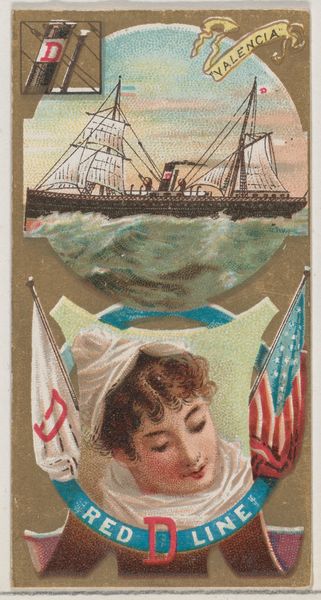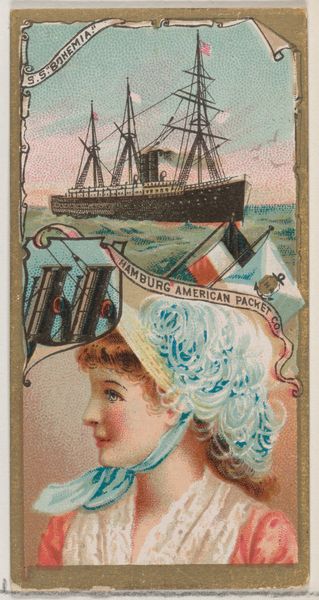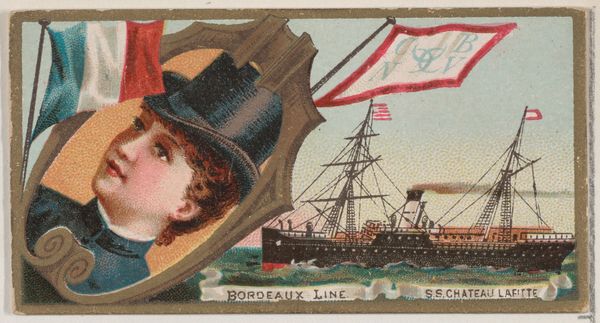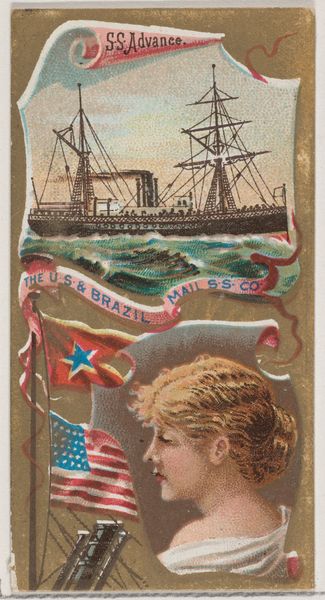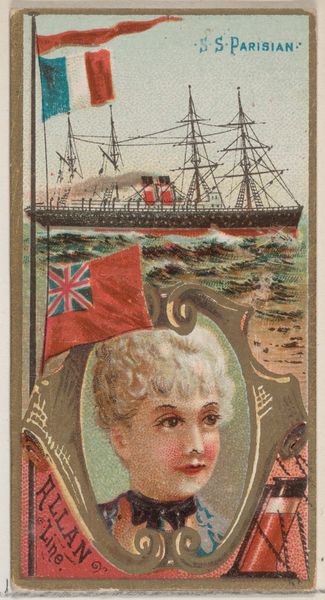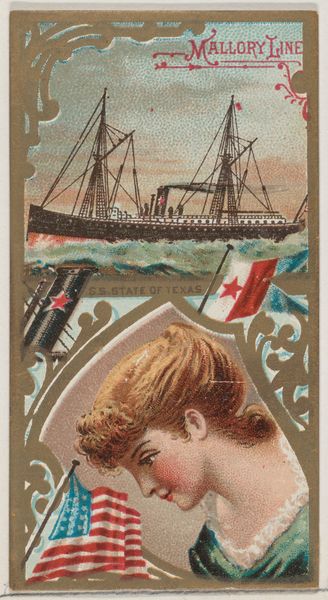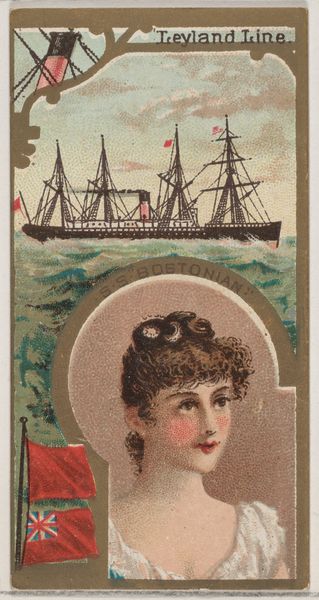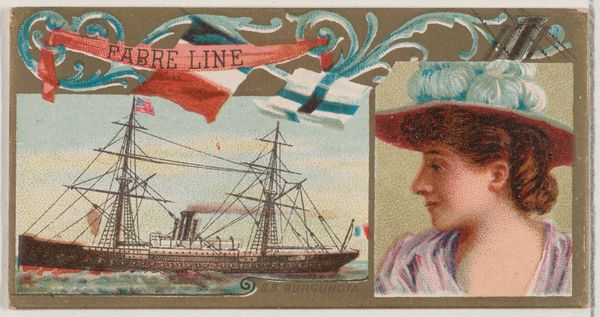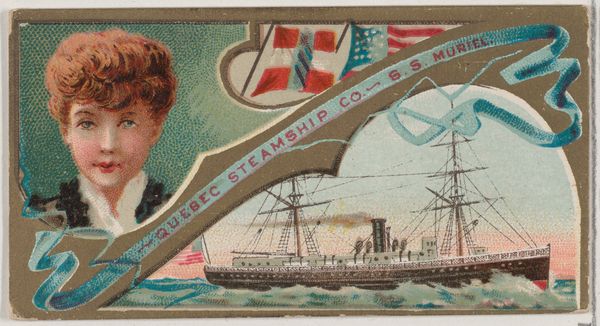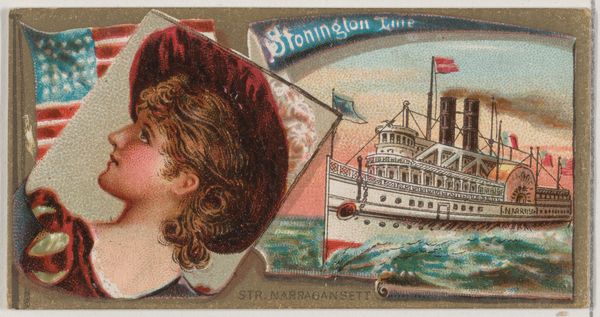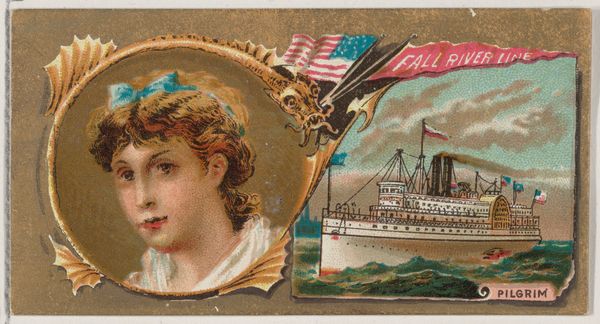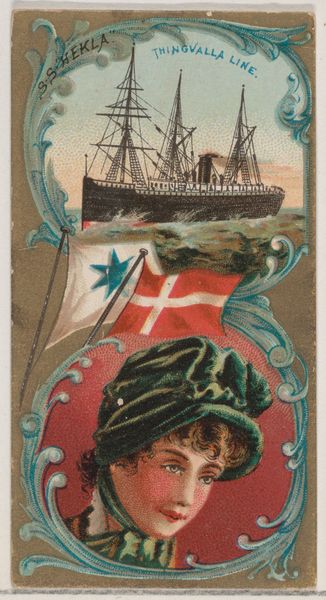
Ocean Steamship Company, from the Ocean and River Steamers series (N83) for Duke brand cigarettes 1887
0:00
0:00
#
portrait
#
ship
# print
#
figuration
#
coloured pencil
#
naive art
#
watercolour illustration
Dimensions: Sheet: 2 3/4 x 1 1/2 in. (7 x 3.8 cm)
Copyright: Public Domain
Curator: This is "Ocean Steamship Company," a print from 1887, part of the "Ocean and River Steamers" series by W. Duke, Sons & Co., known for their Duke brand cigarettes. It is currently in the collection of the Metropolitan Museum of Art. Editor: My first thought is "jumble". There is a ship, a portrait of a lady, flags... It feels crowded and a little... unsophisticated. But maybe that’s part of its charm? Curator: It’s an example of Japonisme meeting industrial advertising. Duke was incredibly innovative with marketing; these cards, included in cigarette packs, were wildly popular. It reveals the emerging visual culture of the era and its fascination with speed, travel and national identity. Editor: The flags are a very clear marker of that. The US flag combined with another with the lettering "G. A." and what looks like a Scottish saltire hints at the target market—or the desired associations of travel and national pride. Were these images diverse? Were there figures representing marginalized communities, for example? Curator: Generally, these trade cards depicted white subjects, reflecting the racial and gender norms of the late 19th century. They played a role in shaping and reinforcing dominant societal views, particularly in their omission and erasure of non-white representation. This card does offer a glimpse into the expanding global economy and the celebration of technological advancements of the era, even as that expansion relied on the exploitation of marginalized labor and resources. Editor: So the card represents a paradox: it promises a future of accessibility through travel, but that future is intrinsically linked to these inequalities. Curator: Exactly. What is striking about this is its overt commercial nature. Unlike traditional art that strives for timelessness, this was designed to be ephemeral, disposable, and, most importantly, effective in selling cigarettes. The composition might feel crowded, but it ensured visibility. The flags suggested aspirations for global travel; the stylishly depicted woman lent aspiration to the whole brand. Editor: And to whom was this woman appealing? What kinds of women, specifically, were understood to be the "right" ones to use or be seen using the advertised cigarettes? That's also worth unpacking for what it says about who gets to participate in and enjoy these kinds of national myths. Curator: Precisely. Studying pieces like this opens dialogues about cultural representation, commercial influence, and the role of art in shaping public perception. It prompts questions about the narratives we construct around progress, identity, and globalization. Editor: A simple trade card, yet a dense intersection of history and culture. A reminder that seemingly innocuous images can reveal much about our complex past.
Comments
No comments
Be the first to comment and join the conversation on the ultimate creative platform.
